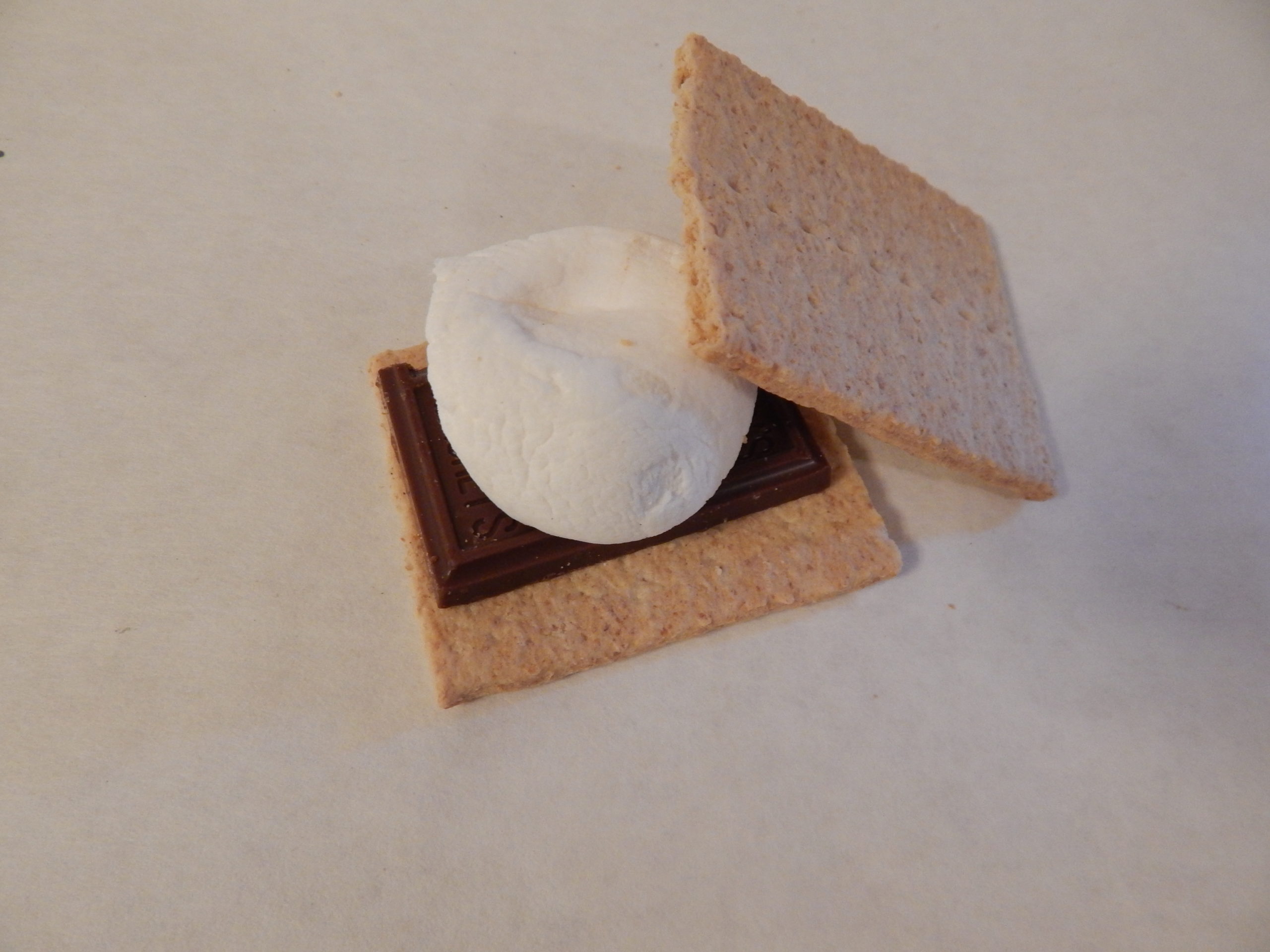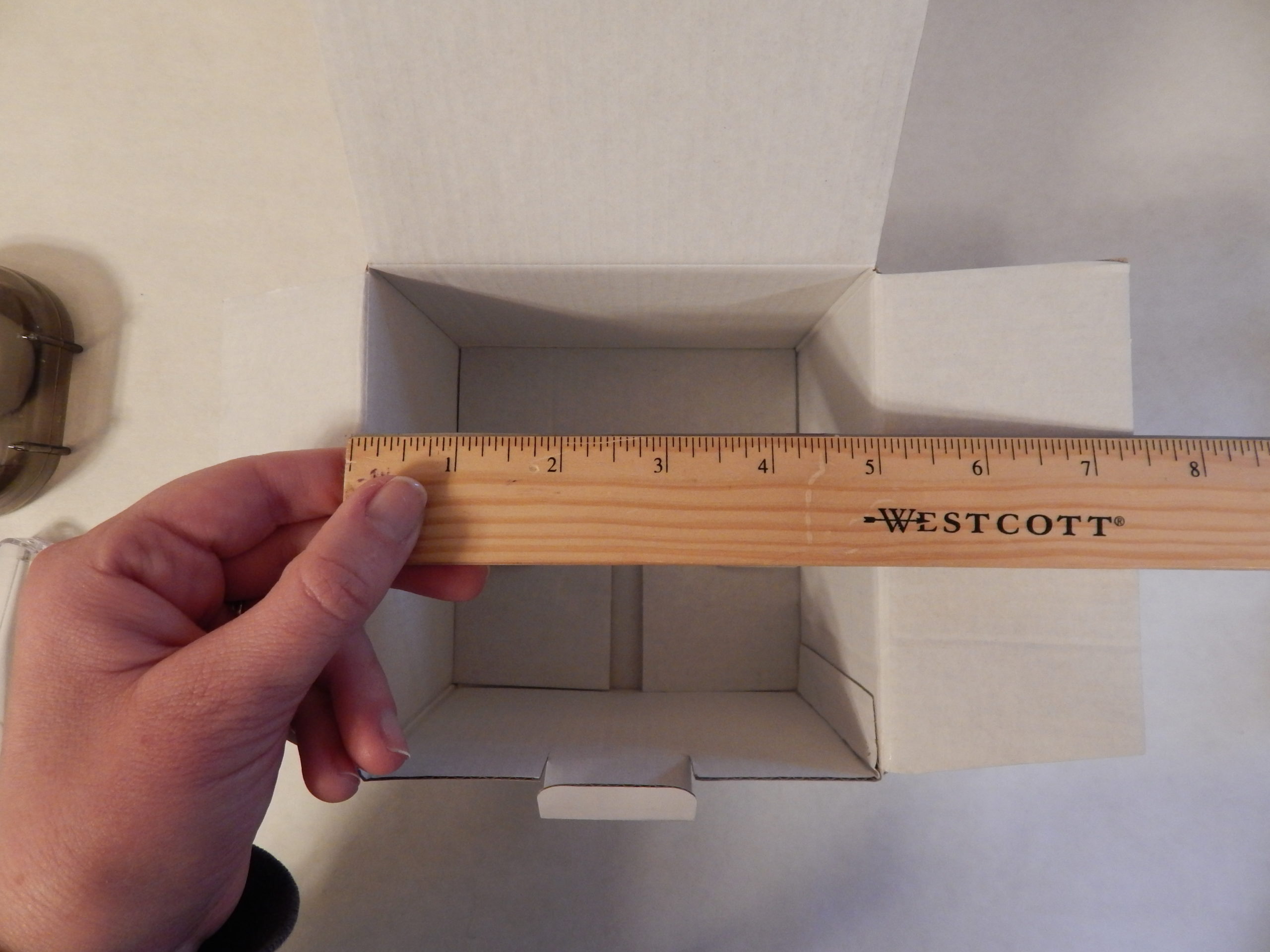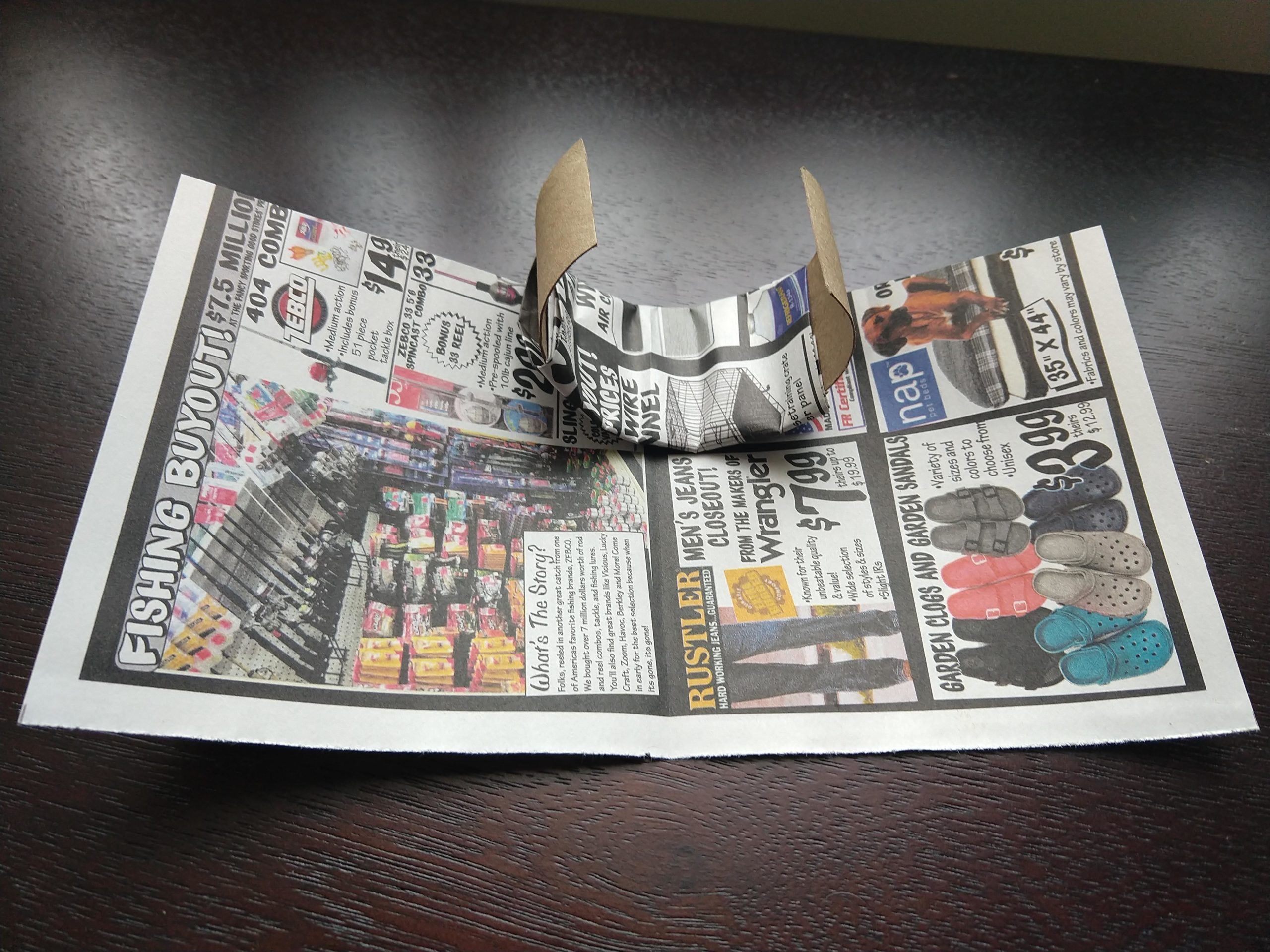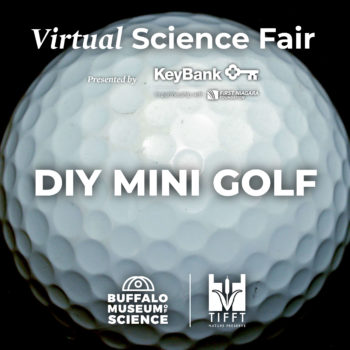Solar Oven

Have science fun as a family! Complete activities with parental supervision.
Materials:
- Cardboard box with a flap top (like a pizza box or a shoe box)
- Aluminum foil
- Clear plastic wrap or a large food storage bag
- Dark-colored paper
- Scissors
- Tape
- Ruler
- Pencil
- Tongs, spatula, or fork
- S’mores ingredients: chocolate, marshmallow, graham cracker (or something similar)
- Optional: thermometer
Procedure
- Take the cardboard box and measure its inside walls.
- Cut the aluminum foil to fit inside and line the inside of the box with the foil. Also, use the foil to cover the inside of the lid. Tape foil down so it stays in place.
- Cut a piece of dark paper to fit into the bottom of the box.
- If today is sunny, proceed with the next steps. If it’s not, keep you eyes on the weather and start this up again on a sunny day.
- Assemble your s’more (graham cracker, then chocolate, then marshmallow!) and place it into the box on top of the black paper.
- Take the piece of clear plastic wrap or the food storage bag and tape it over the opening of the box.
- Place your solar oven outside, in the sun, in a location it will not be disturbed by animals or the wind. Make sure the lid is propped open, but still hanging over the opening of the box.
- Keep an eye on your solar oven for the next hour, making sure it is facing the sun. Play outside or help with some yardwork while you wait!
- When your chocolate has melted, use tongs, a spatula, or a fork to take out your solar oven-cooked S’more and enjoy!
- Congratulations! You engineered an oven to use the power of the sun! Be sure to take a picture to share in the Facebook comments on the Buffalo Museum of Science or Tifft Nature Preserve pages!
What’s it all about?
The Sun, our solar system’s only star, emits short wavelengths of light (radiant energy) toward Earth. This energy may be absorbed by the atmosphere or Earth’s surface and converted to long wavelengths of heat (thermal energy). Your solar oven is concentrating the radiant energy into the box, which is then absorbed by the objects inside. Dark-colored surfaces are better at absorbing radiant energy than light-colored surfaces. The clear plastic wrap helps to trap this thermal energy inside so it can warm the s’more, instead of just escaping – sort of like the windows in a car or a greenhouse!
Although the marshmallow will not get toasty in your miniature solar oven, it will become warm and gooey, like the chocolate, if the temperature approaches 100 degrees Fahrenheit. The end temperature inside your solar oven is dependent on the outside temperature, the intensity of the sunlight, and the absorption and retention of heat within your solar oven. A homemade solar oven has the potential to reach temperatures of over 300 degrees Fahrenheit!
Try It!
- Consider the factors that affect the temperature inside your solar oven. Can you engineer a better solar oven?
- Instead of S’mores, try melting a piece of candy or make art by melting small pieces of wax crayons onto the black paper.
- Add a thermometer! Use a thermometer to measure the temperature at the beginning and at the end. What is the change in temperature?
- In this experiment, we used dark-colored paper at the bottom of the oven. What do you think would happen if we used light paper? Make another oven to test it out!

















